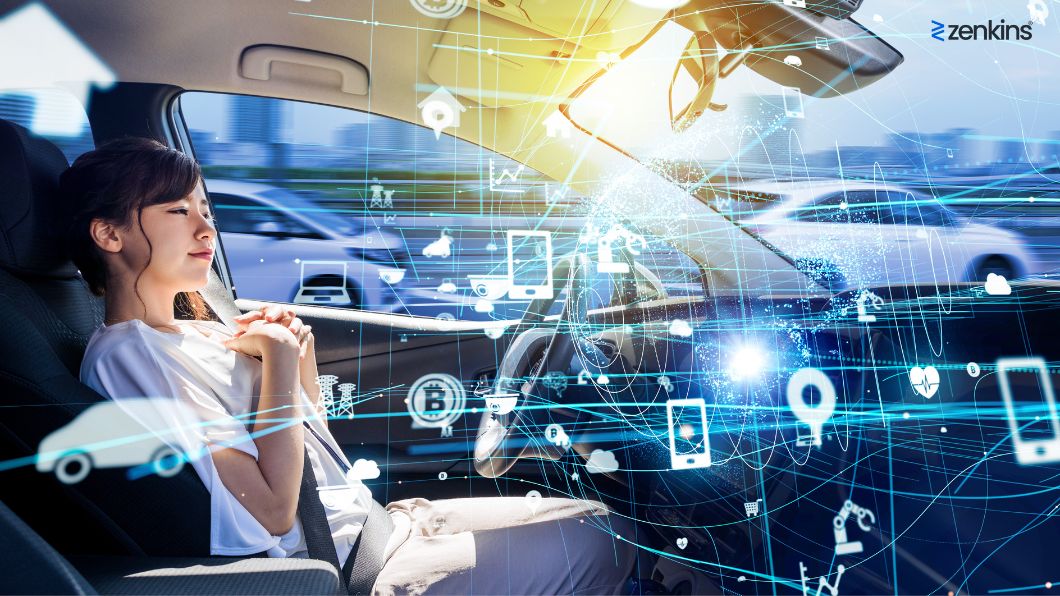The Road Ahead: Automotive Software Development in the Digital Age
Table of Contents
The automotive industry is undergoing a significant transformation with the advent of digital technologies. The once hardware-centric vehicles are increasingly becoming software-driven machines, with sophisticated software systems powering critical functions. This article explores the evolving landscape of automotive software development in the digital age. It delves into the challenges faced by automotive software developers, the role of digital transformation in the industry, and the impact of emerging technologies.
Furthermore, it examines the importance of agile development and collaboration, ensuring safety and security in automotive software, and provides insights into the future trends and predictions of this rapidly evolving field. As the road ahead becomes increasingly complex, understanding the intricacies of automotive software development is crucial for automakers and software engineers alike.
Introduction: The Evolution of Automotive Software Development
The Rise of Software in the Automotive Industry
Gone are the days when cars were just a mechanical marvel. In today’s digital age, software has become the driving force behind automotive innovation. From advanced infotainment systems to cutting-edge autonomous driving features, software plays a pivotal role in enhancing the driving experience. The automotive industry has witnessed a significant shift towards software-driven development, and this trend is only expected to grow in the future.
The Need for Advanced Software Development Practices
As software continues to dominate the automotive landscape, the need for advanced software development practices has become crucial. Traditional approaches to software development no longer cut it in this fast-paced digital era. Automakers and software developers must adopt agile methodologies, continuous integration, and testing to keep up with the ever-evolving demands of the automotive market. This shift in mindset and practices is necessary to ensure that software development is efficient, reliable, and future-proof.
Key Challenges in Automotive Software Development
Complexity of Modern Automotive Systems
Modern automotive systems are a tangled web of sophisticated hardware and software components, making software development a complex task. With the integration of advanced features like adaptive cruise control, lane-keeping assistance, and collision avoidance systems, the complexity of software development has skyrocketed. Software developers face the challenge of seamlessly integrating these features while ensuring reliability and performance.
Integration of Hardware and Software
In the automotive industry, hardware and software go hand in hand. The integration of these two components is crucial for the successful functioning of modern vehicles. Software developers must work closely with hardware engineers to ensure that the software is compatible with the hardware infrastructure. This collaboration requires effective communication, coordination, and a deep understanding of both domains.
Compliance with Safety and Regulatory Standards
When it comes to automotive software development, safety is paramount. Automakers must comply with stringent safety and regulatory standards to ensure the driver’s and passengers’ well-being. This adds an additional layer of complexity to software development, as developers must meticulously follow safety guidelines and conduct thorough testing to identify and fix potential vulnerabilities. Balancing innovation and safety is a challenge that requires expertise and attention to detail.
The Role of Digital Transformation in the Automotive Industry
Digital Transformation: A Game Changer in Automotive Software Development
Digital transformation has had a profound impact on the automotive industry, revolutionizing the way software is developed and integrated into vehicles. It has enabled automakers to leverage advanced technologies like cloud computing, artificial intelligence, and big data analytics to enhance the functionality and performance of automotive software. Digital transformation has opened up new avenues for innovation and has accelerated the development of intelligent and connected vehicles.
Connectivity and IoT in Automobiles
Connectivity has become a buzzword in the automotive industry, and for a good reason. The Internet of Things (IoT) has transformed the way we interact with our vehicles. From real-time traffic updates to remote vehicle diagnostics, connectivity has made driving safer, more efficient, and enjoyable. Automotive software development now focuses on creating seamless integration between the car and the digital world, enabling features like remote vehicle control, over-the-air updates, and personalized driving experiences.
The Impact of Big Data and Analytics
The automotive industry generates an enormous amount of data every day. From vehicle performance metrics to driver behavior patterns, this data holds valuable insights that can drive innovation and improve the overall driving experience. Automotive software developers now harness the power of big data and analytics to extract meaningful insights, enabling automakers to optimize vehicle performance, predict maintenance needs, and personalize user experiences. This data-driven approach is shaping the future of automotive software development.
Emerging Technologies Shaping Automotive Software Development
Advancements in Artificial Intelligence and Machine Learning
Artificial Intelligence (AI) and Machine Learning (ML) are transforming the automotive industry by enabling vehicles to learn, adapt, and make autonomous decisions. From advanced driver assistance systems to self-driving capabilities, AI and ML algorithms are at the core of automotive software development. These technologies are not only enhancing safety but also revolutionizing the way we commute and interact with our vehicles.
Autonomous Driving and Sensor Technologies
Autonomous driving is no longer a distant dream but a reality that is rapidly becoming mainstream. Automotive software development is focused on creating robust autonomous driving systems that rely on a network of sensors, cameras, and radar technologies to perceive the environment and navigate safely. This requires sophisticated software algorithms and precise integration between hardware and software components to ensure reliable and accurate autonomous functionality.
Electrification and Hybrid Systems
The shift towards greener and more sustainable transportation has propelled the development of electric and hybrid vehicles. Software plays a crucial role in optimizing energy efficiency, managing battery life, and balancing power distribution in these vehicles. Automotive software developers are constantly innovating to create intelligent systems that enhance the performance and range of electric and hybrid vehicles, making them a viable and eco-friendly alternative to traditional combustion engine cars.
Agile Development and Collaboration in the Automotive Sector
The Agile Manifesto and its Relevance in Automotive Software Development
Gone are the days of traditional, time-consuming software development processes. In the fast-paced world of automotive software development, agility is key. Enter the Agile Manifesto – a set of principles that emphasizes iterative and collaborative approaches to software development. This approach is highly relevant in the automotive sector, where innovation and rapid product development are crucial.
Collaborating Across Teams and Disciplines
Collaboration is the name of the game in automotive software development. With diverse teams consisting of engineers, designers, and other specialists, it’s essential to break down silos and foster cross-functional collaboration. By working together, teams can leverage their unique expertise to tackle challenges more efficiently and create better products.
Overcoming Challenges in Agile Implementation
Implementing agile methodologies in the automotive industry is not without its hurdles. The sector faces unique challenges such as strict safety standards, complex system integration, and stakeholder management. Agile practices need to be tailored and fine-tuned to address these challenges effectively. With clear communication, adaptability, and a willingness to learn from mistakes, these obstacles can be navigated successfully.
Ensuring Safety and Security in Automotive Software
The Importance of Functional Safety in Automotive Systems
Safety should always be the number one priority in automotive software development. With the increasing complexity of software-driven systems in vehicles, functional safety becomes paramount. Rigorous testing, fault tolerance, and adherence to safety standards, such as ISO 26262, are essential to ensure that software functions reliably and protects both drivers and passengers.
Cybersecurity Challenges and Countermeasures
As vehicles become more connected, the risk of cyber threats grows. Protecting automotive software from cyber attacks is crucial for consumer trust and safety. Robust cybersecurity measures, including secure coding practices, encryption, and intrusion detection systems, must be integrated into the software development process. Collaboration with cybersecurity experts and regular updates are essential to stay one step ahead of potential threats.
Safety Standards and Regulations
The automotive industry is subject to strict safety standards and regulations globally. Compliance with these standards, such as the Federal Motor Vehicle Safety Standards (FMVSS) in the United States and the European New Car Assessment Programme (Euro NCAP), is vital for market access and consumer confidence. Automotive software developers must stay informed about the latest regulations to ensure their products meet the required safety standards.
The Future of Automotive Software Development: Trends and Predictions
Connectivity and Intelligent Transportation Systems (ITS)
The future of automotive software development lies in connectivity and intelligent transportation systems. As vehicles become more interconnected, software will play a critical role in enabling features like real-time traffic information, vehicle-to-vehicle communication, and autonomous driving. Automotive software developers will need to embrace these trends and harness the power of connectivity to create innovative and efficient solutions.
Merging Automotive and Consumer Electronics
The line between automotive and consumer electronics is blurring, giving rise to a new era of software development. From infotainment systems to driver-assistance technologies, automotive software is increasingly resembling consumer electronics. This convergence presents exciting opportunities for innovation, but also challenges in terms of user experience, compatibility, and seamless integration.
Advancements in Human-Machine Interface (HMI)
Human-Machine Interface (HMI) is evolving rapidly in the automotive industry. With the growing popularity of touchscreens, voice control, and gesture recognition, automotive software developers must master the art of creating intuitive and user-friendly interfaces. Advancements in augmented reality and natural language processing will further revolutionize the way drivers interact with vehicles, placing HMI at the forefront of future software development.
Conclusion: Navigating the Road Ahead in Automotive Software Development
As automotive software development continues to advance in the digital age, the industry must adapt to meet the evolving demands and challenges. Embracing digital transformation, leveraging emerging technologies, and adopting agile practices will be key in staying competitive. Safety and security must remain at the forefront, ensuring that software systems meet stringent standards. Looking ahead, the future of automotive software development holds promising trends, such as intelligent transportation systems and seamless integration with consumer electronics. By staying informed and proactive, automotive software developers can navigate the road ahead with confidence, shaping the future of transportation for a connected and software-driven world.
In conclusion, automotive software development is undergoing a remarkable transformation in the digital age. From the rise of software-driven innovations to the integration of advanced technologies, the road ahead is promising. While challenges persist, the industry’s pursuit of digital transformation and adoption of emerging technologies will shape the future of automotive software development. So buckle up, because we’re in for an exciting ride!
FAQ
What are the key challenges faced in automotive software development?
Automotive software development presents various challenges. These include the complexity of modern automotive systems, integration of hardware and software, and compliance with safety and regulatory standards. Overcoming these challenges requires advanced development practices and collaboration across disciplines.
How does digital transformation impact automotive software development?
Digital transformation has revolutionized the automotive industry, significantly impacting software development. It has led to the rise of connectivity and the Internet of Things (IoT) in automobiles, allowing for enhanced vehicle intelligence and functionalities. Additionally, big data and analytics play a crucial role in leveraging valuable insights for optimizing software development processes.
What are some emerging technologies shaping automotive software development?
Several emerging technologies are shaping automotive software development. These include advancements in artificial intelligence and machine learning, which enable intelligent systems and autonomous driving capabilities. Additionally, the electrification and hybridization of vehicles, along with sensor technologies, are transforming the software landscape in the automotive industry.
How can agile development practices benefit automotive software development?
Agile development practices offer numerous benefits in the automotive software development process. They promote flexibility, adaptability, and collaboration among teams and disciplines, leading to faster delivery of high-quality software. Agile methodologies also facilitate the iterative development and testing of software, ensuring that customer feedback is incorporated throughout the development lifecycle.




